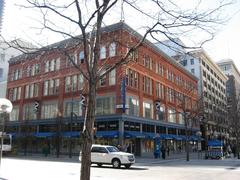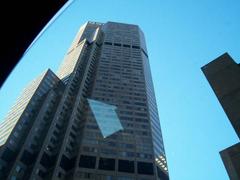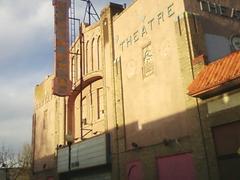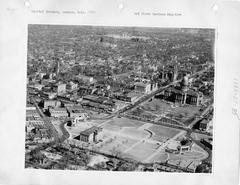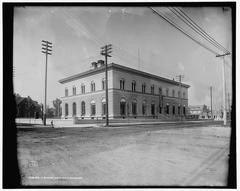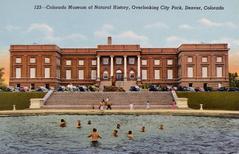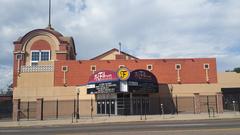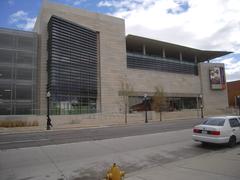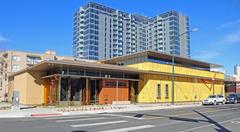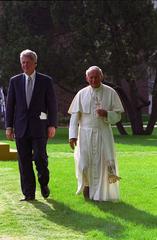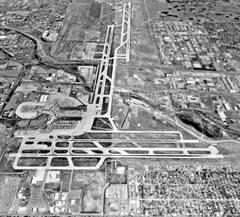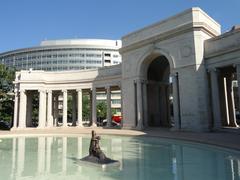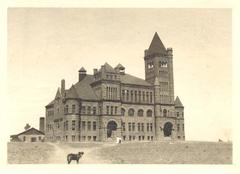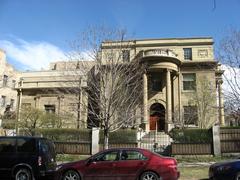Swallow Hill Historic District Denver: Visiting Hours, Tickets, and Attractions Guide
Date: 14/06/2025
Introduction: History and Cultural Significance
Located within Denver’s storied Capitol Hill neighborhood, the Swallow Hill Historic District stands as a living chronicle of the city’s architectural and societal evolution. Developed during Denver’s rapid late 19th-century expansion—spurred by the Colorado Gold Rush and subsequent economic booms—the district showcases an extraordinary collection of Victorian-era homes, including Queen Anne, Colonial Revival, and Denver Square (American Foursquare) styles. Renowned architects such as William A. Lang and Frank Edbrooke left their marks here, shaping a residential enclave that housed influential figures from business, politics, and the arts.
Swallow Hill’s preservation as a historic district—enshrined on both the National Register of Historic Places and Denver’s local landmark registry—ensures that its unique architectural and cultural legacy endures. Open to the public year-round and free to explore, Swallow Hill invites everyone to discover Denver’s Gilded Age charm via self-guided strolls or educational guided tours offered by local heritage organizations. For current details and tour opportunities, consult Historic Denver and History Colorado.
Table of Contents
- Introduction
- Origins and Early Development
- Architectural Character and Styles
- Social and Cultural Significance
- Visiting Swallow Hill: Hours, Tickets, and Accessibility
- Travel Tips and Nearby Attractions
- Preservation and Recognition
- Notable Residents and Landmarks
- Swallow Hill and Denver’s Heritage
- Frequently Asked Questions (FAQ)
- Plan Your Visit Today!
- References
Origins and Early Development
Swallow Hill emerged in the 1880s and 1890s as Denver responded to population influxes and urbanization following the Gold Rush of 1858. Bounded by Clarkson and Emerson Streets and running from East 16th to East 18th Avenue, it became a preferred address for Denver’s rising middle and upper classes, offering a tranquil retreat just east of downtown’s bustle.
Architectural Character and Styles
The district’s greatest distinction lies in its architectural diversity. Queen Anne homes dominate the landscape, characterized by their ornate detailing, turrets, asymmetrical facades, and wraparound porches. Colonial Revival, Denver Square, Italianate, and Romanesque Revival styles also enrich the streetscape, showcasing period craftsmanship and the aspirations of Denver’s elite (Station Denver; History Colorado).
Prominent architects such as William A. Lang, Frank Edbrooke, Balcomb & Rice, and others contributed landmark residences. Noteworthy structures include the Bailey House (1600 Ogden Street) and the Perrenoud (1901), reflecting both Victorian exuberance and early 20th-century transitions (The Perrenoud).
Social and Cultural Significance
Swallow Hill was more than an architectural showcase; it was a hub for Denver’s influential citizens—bankers, attorneys, artists, and community leaders—who helped shape the city’s direction. Churches, schools, and small businesses contributed to a vibrant neighborhood culture, while the district’s tree-lined streets fostered a sense of community distinct from transient areas of the growing city.
Visiting Swallow Hill: Hours, Tickets, and Accessibility
Visiting Hours
The Swallow Hill Historic District is an open, residential neighborhood accessible to the public 24/7. For guided tours and visitor centers, standard hours are typically 9:00 AM to 5:00 PM, Tuesday through Saturday. Always verify schedules on official sites before visiting.
Tickets and Tours
There is no admission fee for self-guided exploration. Tickets may be required for guided walking tours, which are available through organizations like Historic Denver. Tour prices usually range from $10–$20, with discounts for students and seniors.
Accessibility
The district’s sidewalks are generally walkable and mostly flat, though some historic features (original stone curbs, steps) may pose challenges for mobility-impaired visitors. Contact Denver Office of Disability Rights or tour providers for accessibility information and accommodations.
Travel Tips and Nearby Attractions
- Getting There: Swallow Hill is served by RTD bus lines #15 and #20, and is walkable from the 16th Street Mall shuttle stop. Metered street parking and paid lots are nearby, but limited during peak hours (RTD Denver; DestGuides).
- Best Times to Visit: Spring and fall provide mild weather and vibrant foliage. Weekdays are quieter for photography and exploration.
- Dining: Colfax Avenue and 17th Avenue nearby offer a range of restaurants, cafes, and shops (Denver.org Dining Guide).
- Nearby Attractions: Molly Brown House Museum, Colorado State Capitol, Denver Art Museum, Cheesman Park, and Denver Botanic Gardens are all within walking distance (Denver Neighborhood Guide; Delightfully Denver; Denver Gazette).
- Photography: The best light is in the morning or late afternoon. Respect private property while photographing building exteriors.
Preservation and Recognition
Swallow Hill’s historic significance was formally recognized with its listing on the National Register of Historic Places in the 1980s and later on Denver’s local landmark registry. Preservation efforts focus on maintaining architectural integrity while allowing for modern adaptation, ensuring that the neighborhood remains vibrant and livable (Denver Landmark Preservation; The Perrenoud).
Notable Residents and Landmarks
The district has been home to prominent bankers, entrepreneurs, and civic leaders. While most homes are private, key examples of historic architecture include:
- Sheedy Mansion (1115 Grant Street): Richardsonian Romanesque, now a private venue.
- Stoiber-Reed-Humphreys Mansion (1022 Humboldt Street): Detailed stonework and period elegance.
- Bailey House (1600 Ogden Street): Exemplifies Queen Anne with Romanesque influences.
Mature trees, historic streetlights, and landscaped gardens enhance the district’s appeal.
Swallow Hill and Denver’s Heritage
Swallow Hill complements other historic neighborhoods like Capitol Hill and Curtis Park, collectively preserving Denver’s diverse architectural landscape. Its cohesive concentration of high-style Queen Anne homes distinguishes it from other districts, offering educational value for architecture and history enthusiasts (Denver Neighborhood Guide).
Frequently Asked Questions (FAQ)
Q: What are the visiting hours?
A: The district is open 24/7 for self-guided exploration. Guided tours typically operate 9:00 AM–5:00 PM, Tuesday–Saturday.
Q: Is there an admission fee?
A: No fee for self-guided visits; guided tours may require tickets.
Q: Are guided tours available?
A: Yes, check Historic Denver for schedules and booking.
Q: Is the district wheelchair accessible?
A: Sidewalks are generally accessible, but some historic features may pose challenges. Contact Denver Office of Disability Rights for assistance.
Q: Where can I park?
A: Metered street parking and paid lots are nearby, but availability is limited during busy times.
Plan Your Visit Today!
Experience Denver’s Gilded Age legacy in Swallow Hill Historic District. For guided audio tours, maps, and the latest events, download the Audiala app. Explore related articles for more on Denver’s historic neighborhoods, and follow us on social media for updates.
Summary: Key Tips and Recommendations
Swallow Hill Historic District provides an unparalleled window into Denver’s past with its preserved architecture and vibrant community spirit. Visitors enjoy free, year-round access—whether via self-guided walks or curated tours. The district’s proximity to downtown, accessibility, and connection to Denver’s broader heritage make it a rewarding stop for locals and tourists alike. Respect the residential nature, support local preservation, and consult resources like Denver Office of Historic Preservation and Historic Denver for an enriched visit.
References
- Denver’s Architecture and Historical Landmarks: A Journey Through the Mile High City’s Rich Heritage (Station Denver)
- Swallow Hill Historic District (History Colorado)
- Swallow Hill Historic District (Denver Public Library)
- Swallow Hill Historic District (The Perrenoud)
- Denver Landmark Preservation (Denver City & County)
- Historic Denver (About Us)
- Denver Neighborhood Guide (Denver.org)
- DestGuides Denver Landmarks (DestGuides)
- RTD Denver Public Transportation (RTD Denver)
- Denver Office of Historic Preservation (City & County of Denver)
- Denver Office of Disability Rights (City & County of Denver)
- Denver.org Dining Guide (Denver.org)
- Swallow Hill Music Association (Swallow Hill Music)
- Cheesman Park (Denver Gazette)
- Molly Brown House Museum (Delightfully Denver)
